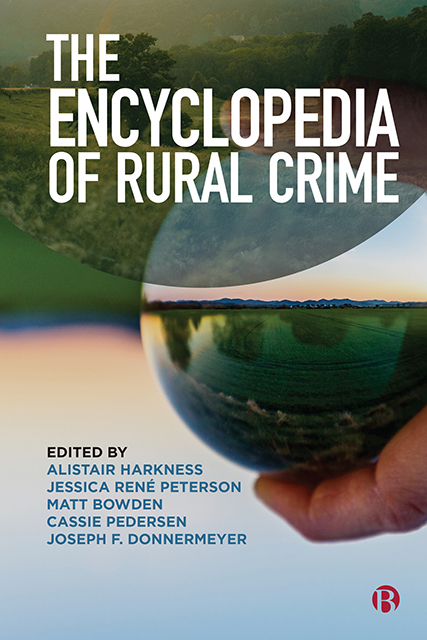Book contents
85 - South America
Published online by Cambridge University Press: 20 June 2023
Summary
Criminology in South America is growing but, like its North American counterpart, the discipline is highly urban-centric. From the seminal article by del Olmo (1999) to more recent works on the subject, the word ‘rural’ is hardly mentioned, if at all. The discipline that was once considered a European import has evolved to become multidisciplinary, yet it neglects criminogenic conditions outside the urban realm.
There are an array of criminogenic conditions and complexities that characterize the countryside of this vast region of the world, with its 14 countries and more than 430 million inhabitants, one quarter of them living in rural areas. Whilst it is important to reflect upon South America as a region and its commonalities in terms of rural crime, it is essential to recognize the risk of over-simplification when conveying the idea of a rural South American criminology. Despite these countries’ shared historical paths, the region is far from being homogenous: countries differ in size, population, penal codes, policing, criminal justice systems and, last but not least, the nature of rural crime.
Criminality in rural South America is complex, not only because of very different rates of rural populations: from Guyana with more than 73 per cent to Uruguay with less than five per cent. The political, economic and social histories of the regions within these countries also differ. The scarcity of criminological research and lack of systematic data available for analysis pose additional challenges to determining the scope, magnitude and characteristics of rural criminality in South America (see Jaramillo, 2016; Instituto Para el Desarrollo Rural de Sudamérica, 2019; Instituto de Pesquisa Econômica Aplicada, 2020).
Rural areas in South America are contested places: that is, places of conflict and violence. The roots of rural crime in South America are strongly linked with unequal and excluding societies. People in rural areas have suffered from political marginalization, dispossession of land, slavery, lack of control over governmental measures of land exploitation, use of violence and the destruction of their cultural and social organizations.
- Type
- Chapter
- Information
- The Encyclopedia of Rural Crime , pp. 343 - 347Publisher: Bristol University PressPrint publication year: 2022

